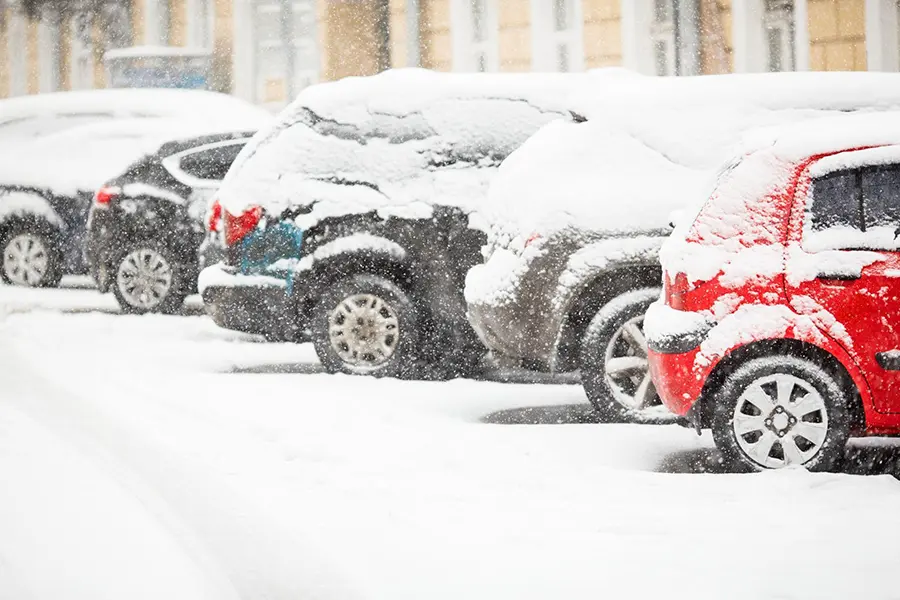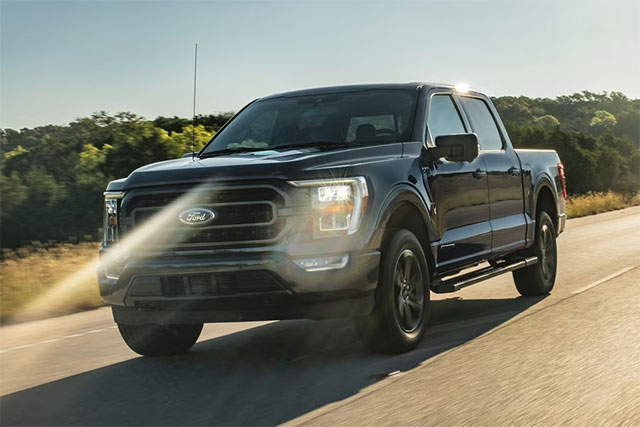Winter road conditions can challenge any driver, which is why it’s important to ensure your safety by preparing your car properly. Here are seven ways to winterize your car in preparation for the colder months:
Table of Contents
Check and Replace Fluids
Cold temperatures can significantly impact your vehicle’s fluids, affecting their viscosity and overall performance. Listed below are some essential fluids to check and possibly replace to keep your car running smoothly:

Engine oil
Oil lubricates your engine’s moving parts to minimize friction, one of the main causes of wear on engine parts. In the winter, oil thickens, making it harder for the engine to turn over. Check your oil level and consistency, and if you need to replace it, consider using a winter-grade oil that flows more easily in cold weather.
Radiator fluid
Radiator fluid — also known as coolant or antifreeze — helps prevent your engine from freezing in extreme cold. Check the reservoir to ensure that there’s sufficient fluid. If the level is low or the fluid looks contaminated, flush it out and refill the reservoir with fresh fluid.
Transmission fluid
This fluid helps keep your transmission system running smoothly. Just like oil, however, transmission fluid can thicken during winter, affecting the gears and overall performance. Check the fluid’s level and color. Consider replacing it or topping it off with fresh fluid if it’s low and dark.
Brake fluid
This fluid is crucial for your braking system to function properly. Check your brake fluid, and if it’s dirty or the level is low, take your car to an automotive professional for a brake fluid flush and replacement.
Inspect and Maintain the Battery
Car batteries have a limited lifespan, so be sure to inspect your battery in order to prevent getting stranded in the cold. Here’s what you need to do to prepare your battery for winter:
- Test your battery: You can use a computerized battery tester to check the condition of your battery, starter, and alternator. It tests voltage, internal resistance, and conductance, giving you a good overview of your charging system’s performance. While you can purchase this tester, many automotive stores offer free battery tests. If your battery is in poor condition, consider replacing it with a new battery.
- Clean your battery terminals: Over time, battery posts and terminals can accumulate corrosion, causing potential starting problems and preventing your battery from recharging in the winter. Inspect your battery for corrosion and use a battery cleaning tool or wire brush to remove it. Also, use a paper towel or rag to wipe away any grease or acid residue on the battery.
- Protect your battery terminals: After cleaning each terminal, spray them with a battery terminal protector to help minimize future corrosion.
Evaluate the Tires
Worn tires and winter driving create a dangerous combination. If you don’t have enough tread on your tires, you’ll have difficulty maintaining traction. Make sure to inspect your tires before driving in the snow to avoid sliding and potential accidents.
Before winter begins, check the tread depth of each tire using a tire gauge. If the tread depth is 2/32” or lower, you must replace your tires immediately. All-season tires should be fine if you live in an area with mild winter conditions. But if you live in an area with intense winters, consider installing winter tires that offer better traction in ice, snow, and slush.
It’s also important to regularly check your tire pressure, as every 10° drop in temperature could mean a loss of 1 psi. Low tire pressure impacts your car’s fuel economy, braking, and steering, so keep a tire pressure gauge handy and refill your tires as needed.
Assess the Heating System
A well-functioning heating system not only enhances your comfort but also contributes to safer driving conditions by maintaining clear visibility throughout the winter months. Turn on the heater and check if warm air is flowing consistently. If you notice any irregularities, such as uneven heating or strange noises, have a professional inspect your heating system. Consider checking and replacing the cabin air filter, as a clean filter provides optimal airflow. Also, ensure that the defroster works effectively to keep your windshield clear from fog and frost.

Check the Wiper Blades and Fluid
Rain, snow, and sleet can significantly hinder your view on the road, so take a moment to inspect your wiper blades for any signs of wear, such as streaking or squeaking. Consider replacing them if necessary and opt for winter-grade blades designed to handle icy conditions. Additionally, check the windshield washer fluid level and ensure that it contains a winter-rated formula with antifreeze properties. Dirty and salt-covered roads can quickly diminish your windshield clarity, and having enough washer fluid is essential for maintaining a clear line of sight.
Inspect the Lights
Winter means shorter days and longer nights, so it’s a good idea to inspect your lights to ensure visibility for your commutes. Start by checking your headlights, tail lights, brake lights, and turn signals. If any lights are dim or completely burned out, replace the bulbs for the safety of yourself and other drivers. Additionally, check that your headlights are properly aligned to shine light on the road ahead and nowhere else. During winter, regularly inspect your lights to ensure they’re free from dirt, snow, salt, and other debris that can reduce visibility.
Additional Tips for Cold Weather Driving
Here are additional tips to consider when driving during the colder months:
- Pack an emergency kit: To prepare for unexpected roadside challenges, pack an emergency kit with essentials like a blanket, flashlight, extra clothing, and non-perishable snacks.
- Plan ahead: Check the weather forecast before heading out and plan your routes accordingly to avoid unnecessary travel in severe conditions.
- Review and update your car insurance: In the event of an accident, car insurance helps provide financial protection, so consider reviewing and updating your insurance coverage to ensure it meets your needs during the colder months. If not, shop around for providers that offer reliable, affordable car insurance.
Investing time in these seven essential tips will not only protect your car against the challenges of colder months but will also aid in a safe and more comfortable journey, allowing you to navigate winter roads with confidence and peace of mind.













